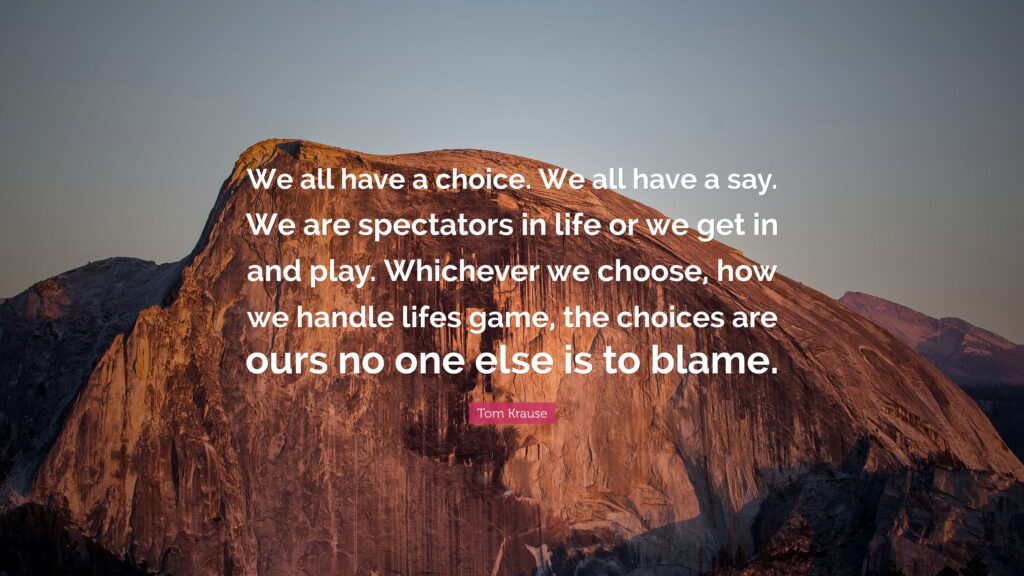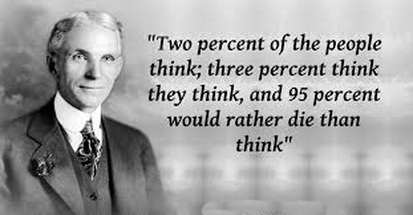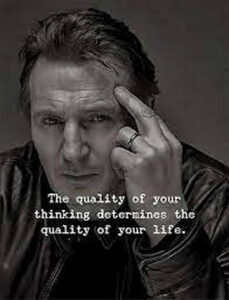Prerequisites
Understanding the Psychological Challenge, Hazards and Perils
Initialization
The website opening page presented the site theme – we are our choices.
Making choices is an intellectual activity of an individual brain, an effort philosophers call thinking (2) responding to a “call” (1) also originating in the subconscious mind. Our target is confined to the significant sociotechnical system problems we call Category three.
“Thinking” underwrites choice making by comparing the knowledge about candidate fixes to a prioritized value system also held within the individual’s brain (3). Choices made that turn out to be good attest that high-stakes thinking took place. 1 2 3
The theme is so central to our life’s trajectory it is expressly connected to this page:
- Scope of page subject matter
- The logical couplings between theme, the sociotechnical system, and this page
Scope: A principal prerequisite for making the expedition to Plan B is a realistic understanding of the relevant functionalities of the mighty subconscious mind.
Connections: The subconscious mind is always first in choice making. Its choice may not be implemented, but it always chooses first and thereby always has to be reckoned with. It posts its choices on the subconscious mind’s teleprompter, graphic below. It is our Stone Age subconscious mind itself that holds the large repertoire of recognition programs that run continuously in its background, monitoring the unfolding reality with your sensors, it also controls, for comparing to trigger limits. Many “calls” triggered by the subconscious mind are resolved by the subconscious mind without any involvement of the conscious mind. The Stone Age environment defined the repertoire. It came in our invariant genome.
Challenges of the A→B expedition
There is no doubt that taking a plan A organization in progressive degeneration and transposing it into a flourishing Plan B is a rather ambitious undertaking. We consider this monster task an expedition into uncharted waters.
An expedition, to be an expedition, requires significant preparation and rehearsal. If the journey had no surprises, it would be an adventure, like Disneyworld, where no one is harmed. Foremost the A→B expedition is psychological, a “psychopedition?”
Preparation begins by learning all you can about the various hazards, perils, and punishing conditions that lie ahead. You cannot expect the trip from Dante’s Inferno to the Emerald City to be a smooth ride. Entangled subconscious minds are unknowable, but you can learn how the entangled system makes its choices.
The psychological perils are abundant. You have been socially conditioned to be bereft of requisite expedition skills. You have been instructed by your elders to not think for yourself but instead obey the commands of clueless sinecures who treat you as a number. This nobrainer mindset is not the stuff of successful expeditions.
Anyone who cannot focus amidst chaos will lose to the social system.

Transposing from Plan A to Plan B is a collective effort, unified by collaboration, cooperation, and coordination from the first stages of preparation starting in Dante’s Inferno. Every individual in the social system came in as psychologically damaged goods and lifted out of the abyss by a veteran interventionist one by one by name. That milestone is called “angst blowdown” and it delivers the first streaming benefit of the expedition.
Much attention is focused on mental health because it is vital internal energy for making progress towards the expedition goals. Otherwise you can’t get off the hyperlearning launchpad. It takes the best adult learning technology to “pole vault” over the moat surrounding Plan A, occupy the castle, and raise the Plan B flag.
The FLLP hyperlearning sessions are spaced one month apart with the whoosh of angst blowdown taking place before episode two of season one is delivered. The keystones are, of course, in close proximity with each other and when the first bunch goes the others soon follow suit after witnessing the strong positive effect on their keystone clansmen.
There are reasons the sinecures do not want you to succeed the A→B expedition:
- They fear your competency exposes their imposter syndrome
- They fear a reduction in class distinctions
It is the responsibility of the interventionist to keep the ruling class at bay until it’s too late to change the outcome. Management signed off on the interventionist’s stop rules before the engagement began. We have two cases of stop-rule violations you can visit that cost the sinecures over $100 M in lost benefits each, not counting the doubling of turnover that occurs.
The peril within that joins the perils without is your subconscious mind. It is an amazing unknowable, Stone Age, black box system. It has 40,000 times the computational power of your conscious mind. It is necessary to know the limitations of your subconscious powerhouse so you can selectively veto a posted imperative so you have the time necessary for validation before execution.
The record of acting automatically on intuition, 100% subconscious, is atrocious. Gut-feeling, intuition-inspired task action imperatives run smack into the laws of reality and logic, falling flat in implementation. The consequences of bad allocation-of-effort choices can be substantial.
The subconscious mind plays a huge role in orchestrating your social behavior, your angst/happiness ratio. It is the source of your instant menu of action imperatives for your participation in social transactions. No understanding of the causes and effects of social behavior is possible without knowing the role the subconscious mind plays in social affairs, especially those that impinge on your health and performance. This role is multidimensional. The subconscious mind:
- Makes all of your social action choices on autopilot, always first to tell you what to do
- Controls your endocrine system according to what it decides is going on in your context
- Changes itself and its memory data stores every day
- Incapable of distinguishing right from wrong
- Unable to cope with unfamiliar complexity
- Never considers feedback in making decisions
- Initializes and runs its situation recognition program to completion in a centisecond
The absurdities, irrationalities, and self-contradictions produced are just another day at the office for your subconscious mind. Science has recently shown your brain’s reality refresh time is 15 seconds. As mentioned, science has also has determined that your subconscious brain comes to conclusions about what you are to do in a centisecond. Don’t wonder why your cognitive machinery can’t make prudent allocations of your efforts left to its own.

Our subconscious mind and the social entanglement
As explained above, the brain of a node on the social network (you) consists of two separate, distinct “minds” – the conscious and the subconscious. Subconscious or unconscious mind, it’s still your brain powerhouse. This bifurcation of intellectual functionality is highly significant to MitM health. Essentially all of the communications circulating over the entangled social network are conducted by biased, irrational, fast-acting subconscious minds. The invariant genome of humankind took evolution three million years to get Homo to the Stone Age version we share today.
Your subconscious mind:
- Contains 90% of all the information processing capacity of the whole brain.
- It’s memory bank is peppered with unclassified, untagged garbage information
- Directly receives and processes all sensory information
- Contains and reconfigures your the memory bank while you sleep
- Reacts instantly, without due considerations, to whatever happens to be zooming by
- Operates your endocrine system
- Operates the sensors detecting the world you live in
Your consciousness mind can volitionally take time to investigate, test, consider the relevant facts, do tradeoffs, and produce a logical choice of task action. Your 10% conscious mind, capable of study, reflecting and rational thought, is far too slow for playing in the social sandbox. To the network buzzing with aggressive make-believe, implementation truth and logic are seen as setting intolerably bad examples for social interaction. The conclusion that we are simply actuators for executing subconscious-mind imperatives, however, is premature.
You have veto power, but it’s on cognitive manual, not on automatic. Cognition is a glucose glutton and that’s why serious thinking is limited to time slots. The best thinkers can go full throttle for a few hours at a time. The typical thinker feels the “pain” of serious cognition in a few minutes. There are many famous quotes to that effect.
Because it imagines everything from a memory full of garbage and dreamed-up narratives that it overwrites daily, without bothering to gather facts or use formal logic, it is delusional (false, fixed beliefs). Because it traffics in GIGO, our rambunctious subconscious mind is grossly incompetent in many aspects of appropriate social behavior and prudent choice-making. In other words, garbage in produces garbage out (GIGO). It works too fast to be reliable or rational. That your intuition is fast acting but very unreliable is settled science.
The higher we get above the mentor line, the more we appreciate the key roles cognition plays in systems-think and the process of elimination (POE). We recognize what it can do for us as well as what it can do to us. Each of us is alert to ways to get our subconscious mind to allocate some of its power towards solving the problems we can’t solve with our conscious mind. The best strategy, at this time, is to spend the day loading our minds with evidence and facts and objectives and hope the subconscious mind makes a dent on the complexity while we sleep. The thought that we have any supervisory control over our subconscious minds is ludicrous. Obviously, the various meditation practices in use don’t work on technically complex matters. Otherwise meditation would be taught in engineering university.
To protect you from burns, it will reflexively pull you away from the flames. To protect itself from the truth when the operational reality exposes its make-believe, it will throw you, itself included, under the bus. Fortunately, Nature has provided a means for you to compensate for the loose cannon, ready, fire, aim, in your cranium. You can veto acting on the screaming imperatives gushing out of the subconscious mind to create time for triage of those noxious imperatives of task action.
To your brain, the contrast between running on subconscious autopilot and functioning on intense, protracted cognition is dramatic. It’s basically blanking out the teleprompter screen while you are running on your conscious mind.
When your subconscious mind is telling you what to do and you comply with whatever is posted on your cranium’s teleprompter, degrading productivity is on Plan A automatic. The powerful part of your brain is always in reality-oblivious mode, where intent (what you want) is overwritten by natural law action (what you get). Attempts to defy natural law create and amplify the mess now on the world stage. Reality denial is a borrowing of trouble and indifferent Nature delivers the consequences without remorse.
Improving productivity requires a large, running commitment of cognitive effort and physical work dictated by effective entropy-reduction methods. From fact gathering and validation to innovating a candidate solution and testing it out, it’s an all-out thinking effort for the conscious mind. Your subconscious mind does not engage the process of elimination, a critical success factor in all productivity improvements of a social system. Any relevant information it uses comes from an untrustworthy memory bank and any missing information it needs to execute the program is made up out of thin air on the fly.
How can I know what I think until I hear what I say? Rudolf Starkermann to his apprentices
We have great admiration, gratitude, and respect for our subconscious mind system. It and it alone is the big-pharma that feeds our shameless addiction to the healthy hormones, like dopamine and peptide oxytocin. However, when it comes to allocating our efforts, little gets through to implementation that hasn’t been checked out by our 10% conscious minds. Vetting the stream of imperatives posted by the 90% subconscious mind, gatekeeping, takes whatever time and energy it takes. Gatekeeping your subconscious is essential in reaching good health and GYAT status. Taking the path of least organizational resistance, obedient to authority, acting on subconscious imperatives, is express service to calamity. Instead of troubling itself with fact-gathering, thinking, and logic, the subconscious goes with nobrainer groupthink. With business-as-usual taking the place of rational thought, the issue is not about landing in hell but the speed in arriving there.
Since the thinking of MitMs has to be realistic and rational to be effective in implementation world, confront the truth about what has been learned about the unknowable subconscious. Its unalterable characteristics are why, exactly, it is essential to gatekeep your subconscious imperative display monitor. Your effort is all you can control but that is enough to endure the madness unharmed. Treat the idiosyncrasies of your subconscious mind as a constraint, not a barrier. Every implementation of the fix finds the transposition taking place in a moment, one that everyone engaged remembers in his own way.
There are several natural laws that apply in full to communication systems and control systems of all ecosystems that must be taken into account. The calamity of OD takes hold because the network of subconscious minds comprising a social system is indifferent to Nature’s laws. It fantasized its narrative to justify its choice before it went to your subconscious/conscious interface teleprompter.

The properties, physiognomies, and limitations of your subconscious mind
Functionalities and characteristics
- Perception: sensing and interpreting, context recognition algorithms
- Information storage manager
- Opaque, unknowable, black box, inaccessible to observation
- Seat of emotion, passion
- Instant, reflexive, choice-centered
- Oblivious to mathematical physics
- Black/white, yes/no choices only
- Paranoid about assembling a plausible narrative before posting its choice
- Functions only in the now. Disregards history and ignores the future
- Ignores unfamiliar complex matters
- No ethics, morals, scruples, stakeholder considerations
- Library of invariant “human nature” customized to hunter/gather conditions
- Instincts
- Biases and reflexes
- Obedience to authority
- Controls your endocrine system and your immune system
- Sole source of the cranium’s one-way private teleprompter
- Chooses on an impetuous-automatic, unknowable basis, from its storehouse of fiction
- Impervious to
- Feedback of consequences
- Truth, ascertainable facts
- Lies
- Disturbance lessons-learned
- Contradictions
- Risk
- Never attempts to validate its stores of information as to their “truth”
- It knows nothing of natural law
- It routinely attempts to defy natural law
- Perfectly suited to science fiction
- Entropy-extraction impossibly incompetent
- Oblivious to false and missing information
- Oblivious to feedback of non-confirmatory information
- Oblivious to future, risks, the law of experience
- Oblivious to history. What it stores and recalls is fiction.
- Cannot predict, forecast, check its information quality
- Defensive
- Anti-prying, anti-curious, anti-fact-gathering
- It distrusts and fears the 10% conscious mind as an inconvenience
- Demands faith, blind acquiescence
- Baffled by the 2ndLaw, coming and going
- It knows nothing about implementation and cannot speak the idiom
Second order attributes of your subconscious mind
- 100% of the task action imperatives posted on the subconscious teleprompter, automatically executed by the sinecures, are produced by the subconscious. You can’t will anything to be on the monitor.
- Unable to distinguish right from wrong, our subconscious assumes it knows everything (IKE) or enough (ike)
- Everything in its long-term memory library is fiction. What it reads from your reality sensors is distorted beyond recognition by biases before it is recorded in memory.
- It processes on what it has in a centisecond
- It creates “facts” as it deems necessary to defend plausibility of choice
- It cannot distinguish its compilation of fake reality and delusion from material reality
- It cannot implement Gödel’sproof
- It cannot handle negatives – “don’t” and “not” and “if, then”
- It cannot infer or deduce, make conclusions and arguments based on formal logic
- It processes all your senses in a form incongruent with reality. E.g., optical illusions. Your sense of reality manufactured by your subconscious is a compilation of distortions. Your mental model of reality is alwaysa fictional account.
- It operates your intuition faculty and arrives at false conclusions more than random chance.
- Defensive: much of its resources goes to the coverup of previous errors
- It will commit any crime to defend its “honor,” including killing its host
- It doesn’t know what is best for you and perforce doesn’t care
- It cannot distinguish right from wrong. It is uninfluenced by morals, ethics, integrity and humanitarianism
- It only knows a manipulated image of the present and reacts, believing its own flawed memory over the facts it faces
- It acts oblivious to consequences, feedback is nonexistent or too slow to be useful.
- It frets over what is already lost by its incompetency
- Normal is illogical and irrational
- Risk indifferent
- Indifferent to your welfare
- Oblivious to inalienable rights
- It cannot handle future, consider potential consequences – it is exclusively nowsight
- It cannot deal with the 2ndLaw, ecosystem laws
- It cannot qualify or filter the information it processes.
- It does not search for actionable-quality facts, it makes stuff up on the fly
- Acts only on its memory, not presented facts
- It cannot foresee, formulate goals and objectives. It doesn’t systematically goal-seek anything.
- It has no benchmark references. It doesn’t check itself against any standards. No stop rules

It’s interesting that the field of social psychology keeps adding to the list of cautions and warnings about the untrustworthy subconscious mind. Science never finds anything reliable about the subconscious that’s useful for engaging reality. Fortunately, research has taken intuition out of the sociology toolbox, e.g., and nuked it. The supremacy of intuition and gut feeling in social behavior had a long run as a substitute for the labor of thinking. Potentates proclaim possession of the most common of the common senses and you obey their groupthink creed, ignoring your own sense of reality seen with “your lying eyes.”
Common defense mechanisms
Dozens of different defense mechanisms of the untrustworthy subconscious mind’s bad choices have been identified. Some are used more commonly than others. These psychological responses are not under a person’s conscious control. That means you don’t decide what you do when you do it. Here are a few common defense mechanisms:
- Denial: it occurs when you refuse to accept reality or facts. In denial.
- Repression: unsavory thoughts, painful memories, or irrational beliefs.
- Projection: attributing reality to another person.
- Displacement: Kicking the dog when you come home from work.
- Regression: Avoiding everyday activities because they feel overwhelming.
- Rationalization: creating intellectual alibis for bad choices.
- Sublimation: redirecting angst into an object or activity that is appropriate and safe.
- Reaction formation: choosing to behave in opposition to your instincts.
- Compartmentalization: Granulation and dispersion.
- Intellectualization: Fighting a psychological phenomenon with facts.
The subconscious mind cannot recognize novel complexity for what it is. Plan B is one of those cases in which intuition is baffled by the facts. The situational-recognition algorithms it runs are far too fast for checking on information quality and performing triage. The subconscious mind labels novel complexity as either a threat to security or as insignificant. If there is going to be learning about novel complexity by the subconscious mind, it will happen via cognitive processing through the conscious mind. People who are socialized to not think for themselves, explain away novel complexity by all-purpose catchwords, alien forces, and both.
Living with Plan B, we remind ourselves daily that the same subconscious mind that compels us to make bad choices in Plan A also does yeoman’s service in maintaining Plan B. It only seems like the subconscious mind prefers Plan A. If you don’t intervene, the subconscious mind dreads the loss of cranial glucose from protracted cognitive effort.
In truth, because it is indifferent, the subconscious mind can be a powerful ally, especially is the arena of creativity and innovation. It takes a while to accept our subconscious minds as they are, but it comes with Plan B experience.
The order of battle to regain your health is forced by the subconscious mind and invariant human nature. You have psychological health issues because you have given free rein to your subconscious brain, Stone Age model, to direct your efforts. Giving your choice-making needs over to your subconscious is giving unmonitored access to choice-makers you don’t even know. The grand central station of health is your subconscious.

In summary
It is imperative to understand the huge role of the subconscious mind, a GIGO factory, in choosing your efforts. Notice the speed by which it chooses. The inescapable fact about health determination is that the subconscious mind completes the computations much too fast for any kind of input validity checking or processing logic review. If you will but focus your attention on speed of response, you can learn to tell choice-making by intuition and from thoughtful risk management. Why so fast? Think Stone Age conditions.
Our Stone Age genome considers measuring the psychological state of interlopers, man or beast, as urgent business. The no-brainer use of intuition to measure health and trustworthiness in others takes place in less than a centisecond.
In these turbulent, unprecedented times, reflexive choice-making is the borrowing of trouble. Your intuition is so loaded with blind spots, biases, and false assumptions that any choice it makes is unreliable. If you proceed burdened with high anxiety anyway, trust building is impossible. Your “true” status is read by others before you can blink. Game over.
The only known way that Cat 3 problems are fixed
If you have a system problem, a high-stakes sociotechnical system problem, a Cat 3, only a system fix will do. The failing system is displaced with one that works. Incontrovertible. Cat 3s are problems that come with no obvious goal of substance. Fixing perceived individual consequences are not goals that, even if reached in a particular case, solve the system problem. For Cat 3 problems, thinking must be total system-think.
We routinely evaluate how other goal-seeking methods pan out on Cat 3 problems. That business as usual is an unmitigated disaster, usually obvious from the project start, has no exceptions. Working on elements of the perceived problem, reductionism, is a lost cause. The Nash equilibrium, mathematical physics rules. Our experience affirms that the common failure mode for failed Cat 3 projects is reductionism.
There are many rational reasons why reductionism is so popular and ingrained:
- You can always decompose a system down to a level that aligns with your level of thinking competency.
- You assume no responsibility for solving the Cat 3 problem
- You never run out of people to blame for failure
- You can get credit from your discipline for your work on a segment of a big problem
- You avoid the heavy-duty system-think process that’s required for Cat 3
There are several consequences for using reductionism on Cat 3 projects, besides total project failure:
- It wastes efforts that could be applied to effective methods. It is sunk cost.
- The time spent in failure mode allows the Cat 3 problem to get worse.
- The opportunity to learn effective system-think methods that work on Cat 3s is lost.
- No lessons learned from failing.
The system-think process that works on Cat 3s is not instinctive, not taught in university. It requires you to solve the Cat 3 before you can learn the details on cause and effect. Say what? Solve the problem before learning how to solve the Cat 3 problem in a straight forward manner? Preposterous!
It would be laughable if it weren’t true. We suffered for decades in this intellectual squeezebox of system think before 2013.
You have to make bold and risky attempts at a system fix. Never conventional, no precedents, process of elimination, go for broke. Examples include the Egyptian chariot, the Greek phalanx, the trebuchet, the steam engine, and the atomic bomb.
You have to solve the Cat 3 sociotechnical problem in order to understand its scope of causes and effects so that it can henceforth be solved in a straightforward, direct manner. The first solution comes from thinking creative sociotechnical system think and luck.
To fix Cat 3 sociotechnical system issues requires system think creativity of a fecund, radical system sort. When you solve a Cat 3 problem, you have turned it into a Cat 2 problem. Finding the requisite for Cat 3 is system think and that means bold, unconventional system designs. And that means creativity and that means autonomy.
Once you solve the sociotechnical system problem and collect operating data, you can begin to learn about scope, cause and effects, by before and after comparisons. You will be surprised by the amount of significant stuff you originally missed, both bad and good.
We consider the innovation in Cat 3 problem solving practice to be the largest contribution ever made to survival of the human species.
Handicaps
The level of thinking required for Cat 3 success is far beyond the capabilities of the ruling class. Remind yourself often that the authorities do not want you to be able to think at the Cat 3 level. The rulers have to claim top-gun status to hold on to its privileges.
Hold onto the assumption that your rulers are hostile to your intellection. Since they can’t deliver prosperity, and their only lever is to punish, they don’t want that capability in the underlings. You assume leaders have competencies that their role forbids by virtue of the natural laws that determine the limits of that role. They do not in fact possess those competencies.
They claim to have the big picture seat when they know nothing truthful about the operations they rule. You have to learn that the authority you show obedience to does not want you to be self-sufficient cognitively. That is, be able to consistently make high-stakes choices that pan out well.
For millennia philosophers have claimed nobody thinks. Learn their definition of thinking and prove them wrong.
Key concepts
We define ‘reality‘ as a quality appertaining to phenomena that we recognize as having a being independent of our own volition (we cannot ‘wish them away’). Compared to the reality of everyday life, other realities appear as finite provinces of meaning, enclaves within the paramount reality marked by circumscribed meanings and modes of experience.
We define ‘knowledge‘ as the certainty that phenomena are real and that they possess specific characteristics. That generality covers a lot of ground. The social distribution of knowledge thus begins with the simple fact that no one can know everything known to my fellowmen, and vice versa, and culminates in exceedingly complex and esoteric systems of expertise. Knowledge of how the socially available stock of knowledge is distributed is an important element of that same stock of knowledge.
A society’s stock of knowledge is structured in terms of what is generally relevant and what is relevant only to specific roles… the social distribution of knowledge entails a dichotomization in terms of general and role-specific relevance… because of the division of labor, role-specific knowledge will grow at a faster rate than generally relevant and accessible knowledge… The increasing number and complexity of sub universes of specialized knowledge make them increasingly inaccessible to outsiders.
Theoretical knowledge is only a small part of what passes for knowledge in a society… the primary knowledge about the institutional order is knowledge… is the sum total of ‘what everybody knows’ about a social world, an assemblage of maxims, morals, proverbial nuggets of wisdom, values, beliefs, and myths.
Social order is a human product, or more precisely, an ongoing human production. Man is biologically predestined to construct and to inhabit a world with others. This world becomes for him the dominant and definite reality. Its limits are set by nature, but, once constructed, this world acts back upon nature. In the dialectic between nature and the socially constructed world the human organism itself is transformed. In this same dialectic man produces reality and thereby produces himself.
Our unique and substantial contributions to society at large
- A generic method for solving Cat 3 problems, consistent with the law of optimality
- A generic method for establishing a sustainable, flourishing, corruption-free social system.
- A generic method of prudent choice-making for high-stakes matters
- Gatekeeping the imperatives issuing from your subconscious mind
- Determining value systems in use (POSIWID)
- The areas where only conscious mind thinking will do
- The limitations of competency in the social hierarchy (Warfield’s dictum)
- Providing proof of eventual success as-you-go. Project failure prevention
Use these claims as benchmark standards to critique our fundamentals as you peruse the website.
Views: 107


